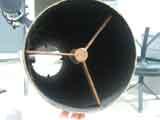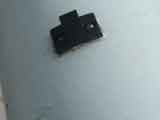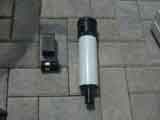Telescope Project
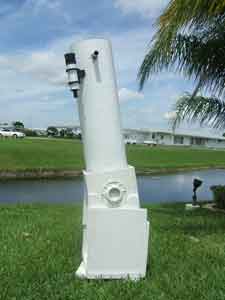
Thank God for PBS. I happened upon a show one night long ago about the Sidewalk Astronomers. I had no idea that ordinary individuals could make their own telescopes. I can recall the images at that time of scientists and engineers building the Hubble telescope's mirror with large sophisticated equipment. These were well-educated and well-funded PhD's, and they couldn't get it right. How could I, a mere mortal, even think of attempting such a project?
Well thanks to John Dobson, founder of the Sidewalk Astronomers, I learned it wasn't that difficult. After watching the show, I decided to build a 6" telescope. I called the Sidewalk Astronomers and much to my surprise and delight I spoke to Mr. Dobson himself. We had a wonderful conversation about how I could get started on the road to telescope building. At the time there was very limited Internet access and hence limited info about such projects. Mr. Dobson convinced me to start on a 10" telescope instead of a 6". He also supplied me with book titles I might want to read as well as retailers of telescope making supplies.
I found that "How to Make a Telescope" by Jean Texereau was my best source of information. My first task was to grind the mirror. I bought the mirror blanks, grinding powders and pitch material from the same retailer, although I can't remember who it was. I made a grinding stand by filing a plastic tub with concrete and placing a 3" threaded steel pipe in the center. After I screwed a steel plumbing floor flange to the pipe, I attached a piece of 16" square plywood. I put polyurethane on the wood because I knew it would get wet from the grinding process and I didn't want the wood to delaminate. I screwed three wood cleats to the wood platform and I was off and running. I intentionally made the grinding stand very heavy because I wasn't sure how much force it would take to push the tool against the mirror and I didn't want the stand to fall over.
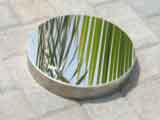
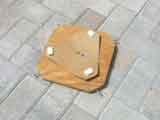
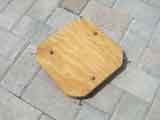
After I finished the mirror I started on the rest of the telescope. The only place I could find a 12" sonotube was a building supply retailer; and they only sold it in 12' lengths. Trying to get that home in a Saturn was a challenge to say the least. Armed with the focal length info, I cut the sonotube roughly to size. I built a wooden box to go around the tube to cradle the telescope's optics to a wooden base. I used toilet flanges on both sides to ride in "V" notches in the base. One of the most difficult tasks was trying to find a sheet of Teflon. I couldn't get any info from anyone as to where I could find such an item. I finally found a local plastics company, which sold me a one foot square piece. I cut four rectangular pieces and nailed them inside of the "V" notch on the base.
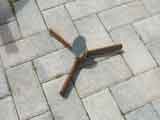
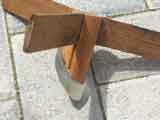
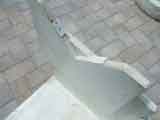
The mirror base is simply a piece of wood with 3 adjustable screws on one side and a piece of thin cardboard tacked in place with, what else "tacks". I made three plaster squares, which were glued to the cardboard right above where the screws protrude from the other side. This whole assembly gets attached to the bottom of the sonotube with four more screws. One of the few items I did not make was the secondary mirror. It was too cheap to buy rather than make one myself. The mount is a piece of left over cloths closet rod cut at 45 degrees with three groves along the sides to accept cedar shims.
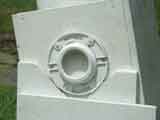
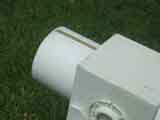
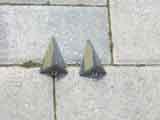
I also bought the scope finder, but before I would attach it in place I reinforced the sonotube with fiberglass so the weight of the scope would not deflect the side of the cardboard tube. After everything was built and installed I could figure the center of gravity by sliding the tube back and forth inside the cradle then secure it with some short screws. This step is important if you want your telescope to stay up on its own. I did screw up with the placement of the eyepiece. It was about on inch too close to the telescope base. I had to fill in the hole and cut a new hole further out but by doing so I changed the center of gravity ever so slightly. My solution was to put a strip of Velcro along the back of the tube and place fishing weights to give me the proper CG. I could have moved the tube within the cradle, but I figured in the future I might want to use different filters which would change the CG.
